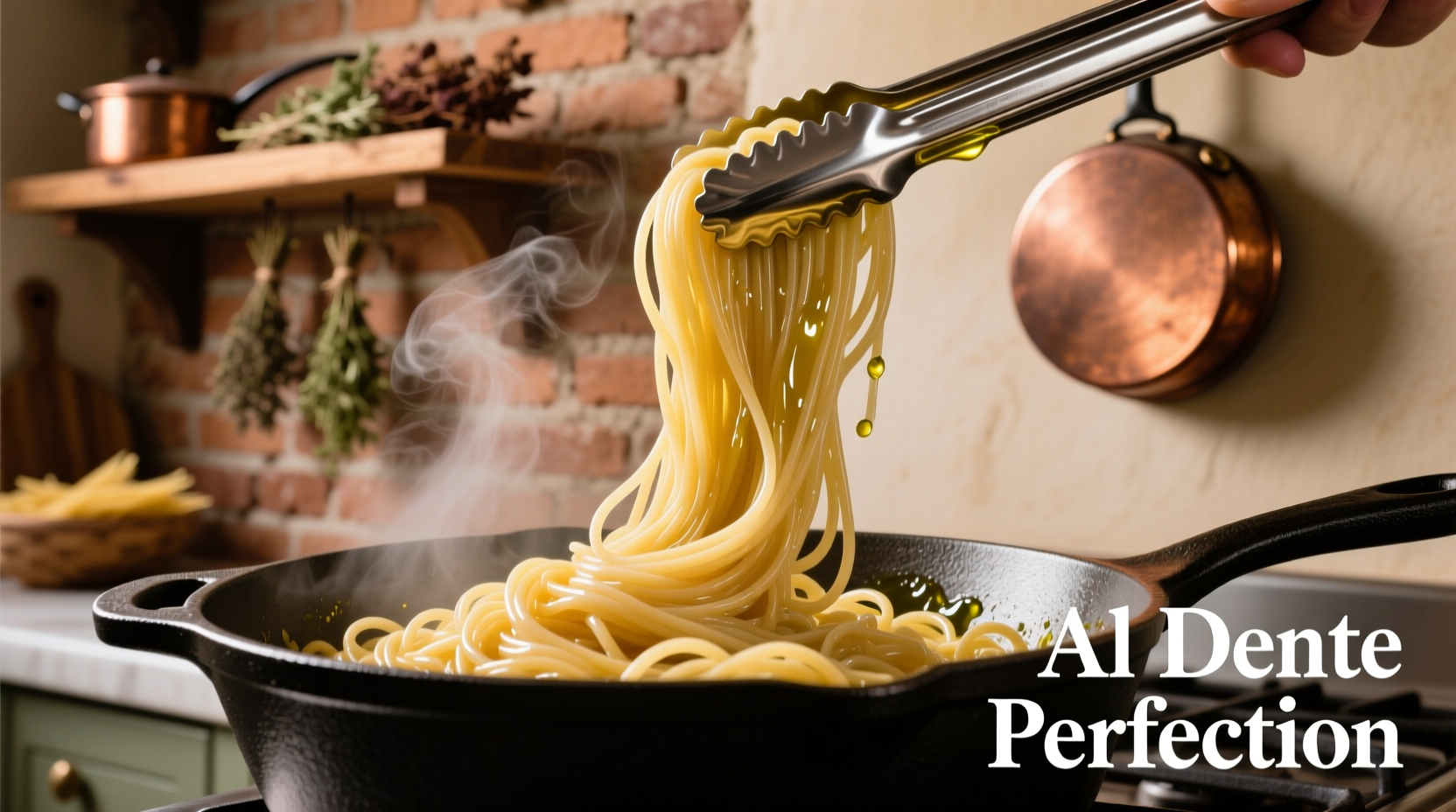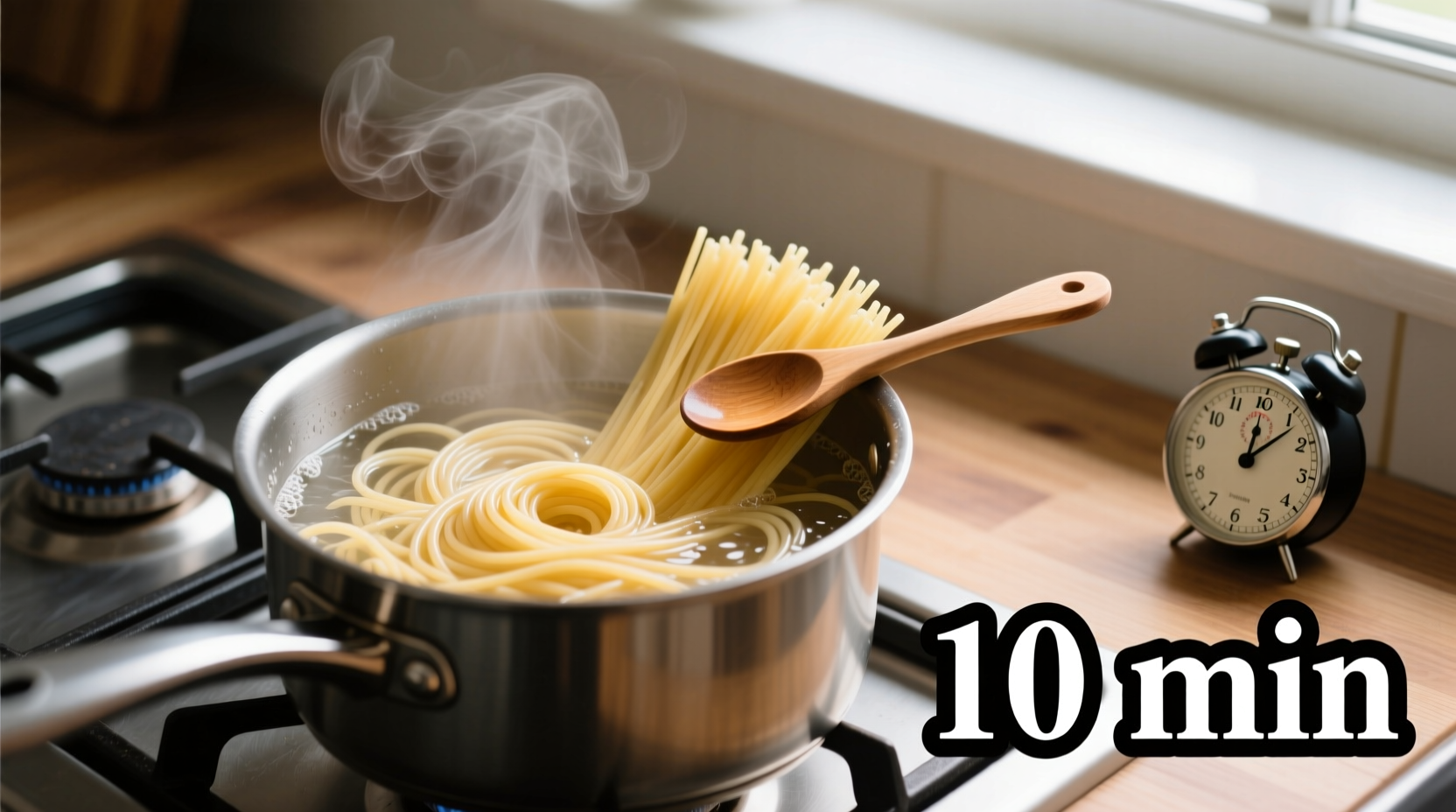Ever wondered how long does it take to cook spaghetti to that perfect al dente texture? The standard answer is 8-12 minutes for dried spaghetti, but the reality is more nuanced. Getting it right depends on water temperature, pasta thickness, and your personal texture preference. This guide delivers precise timing information backed by culinary science and professional chef techniques—no guesswork required.
Why Spaghetti Cooking Time Matters
Proper timing transforms spaghetti from mushy disappointment to restaurant-quality perfection. Undercooked pasta feels chalky and hard, while overcooked strands become limp and lose their structural integrity. The ideal spaghetti cooking time creates that signature Italian "al dente"—firm to the bite yet fully cooked through.
Your Step-by-Step Spaghetti Cooking Timeline
Follow this chef-approved sequence for perfect results every time:
Preparation Phase (2 minutes)
- Use 4-6 quarts of water per pound of spaghetti (critical for proper cooking)
- Add 1-2 tablespoons of coarse salt per gallon of water (never add oil)
- Bring water to a full rolling boil before adding pasta
Cooking Phase (8-12 minutes)
- Add spaghetti all at once, stirring immediately to prevent sticking
- Maintain a gentle boil (not too vigorous)
- Stir every 1-2 minutes throughout cooking
- Begin testing for doneness 2 minutes before package time ends
Doneness Testing (Critical 30 seconds)
Fish out a strand with tongs, cool slightly, then bite. Perfect al dente spaghetti offers slight resistance in the center with no hard core. Remember: spaghetti continues cooking after draining, so remove it 30 seconds before perfect doneness.
| Pasta Type | Standard Cooking Time | Al Dente Target |
|---|---|---|
| Thin spaghetti (No. 1-3) | 7-9 minutes | 6-7 minutes |
| Regular spaghetti (No. 5) | 8-10 minutes | 7-8 minutes |
| Thick spaghetti (No. 8) | 10-12 minutes | 9-10 minutes |
| Whole wheat spaghetti | 10-12 minutes | 9-10 minutes |
Factors That Change Your Spaghetti Cooking Time
Several variables affect how long to cook spaghetti beyond package instructions:
Water-to-Pasta Ratio
Insufficient water causes starch concentration to rise, lowering boiling temperature and extending cooking time. The University of California's Department of Food Science confirms that proper water volume maintains consistent boiling point for accurate timing (foodscience.ucdavis.edu).
Altitude Considerations
At elevations above 3,000 feet, water boils at lower temperatures, requiring 25% longer cooking times. The USDA's Complete Guide to Home Canning notes this phenomenon affects all pasta cooking (nchfp.uga.edu).
Pasta Composition
Whole wheat and gluten-free varieties need 1-3 extra minutes due to different starch structures. Bronze-die extruded pasta (common in Italy) has rougher surface that absorbs sauce better but may require slightly longer cooking.

Common Spaghetti Cooking Mistakes
Avoid these timing pitfalls that ruin otherwise good pasta:
- Adding pasta to lukewarm water - Always wait for full rolling boil
- Overcrowding the pot - Cook in batches for restaurant-quality results
- Not salting adequately - Salt seasons pasta from within, not just surface
- Discarding all pasta water - Reserve 1 cup for sauce emulsification
- Over-stirring - Gentle stirring every 1-2 minutes prevents damage
Pro Tips for Perfect Spaghetti Every Time
Professional chefs employ these timing techniques:
- Set two timers: one for package time minus 2 minutes (when to start testing), another for full package time
- Use the "throw against wall" test only as last resort—reliable testing requires tasting
- Reserve pasta water before draining—its starch content helps sauce cling to spaghetti
- Finish cooking in sauce for 1-2 minutes to absorb flavors (called "mantecatura" in Italian)
- Never rinse spaghetti after cooking unless making cold pasta salad
Spaghetti Timing Evolution: A Historical Perspective
Spaghetti cooking time has evolved significantly. Traditional Italian methods from the 19th century involved longer cooking (15-20 minutes) due to coarser, less refined durum wheat. Modern pasta production techniques developed in the 1960s created more consistent strands requiring precise 8-12 minute cooking windows. The "al dente" standard we know today only became widespread after World War II as Italian cuisine gained international recognition.











 浙公网安备
33010002000092号
浙公网安备
33010002000092号 浙B2-20120091-4
浙B2-20120091-4